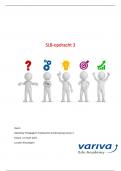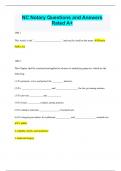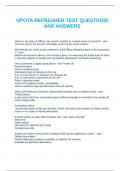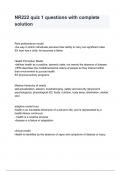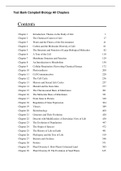Exam (elaborations)
PHY 265 Exam 1 | With 100% Correct Answers
- Course
- Institution
PHY 265 Exam 1 | With 100% Correct Answers What is the Physics Primer? a. A tutorial of the most important physics concepts covered in introductory physics courses. b. A detailed explanation of all of the mathematics you will use in your introductory physics course. c. A list of the most importan...
[Show more]






